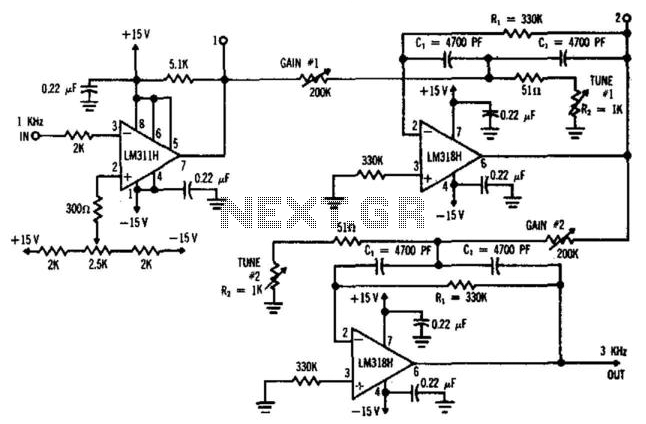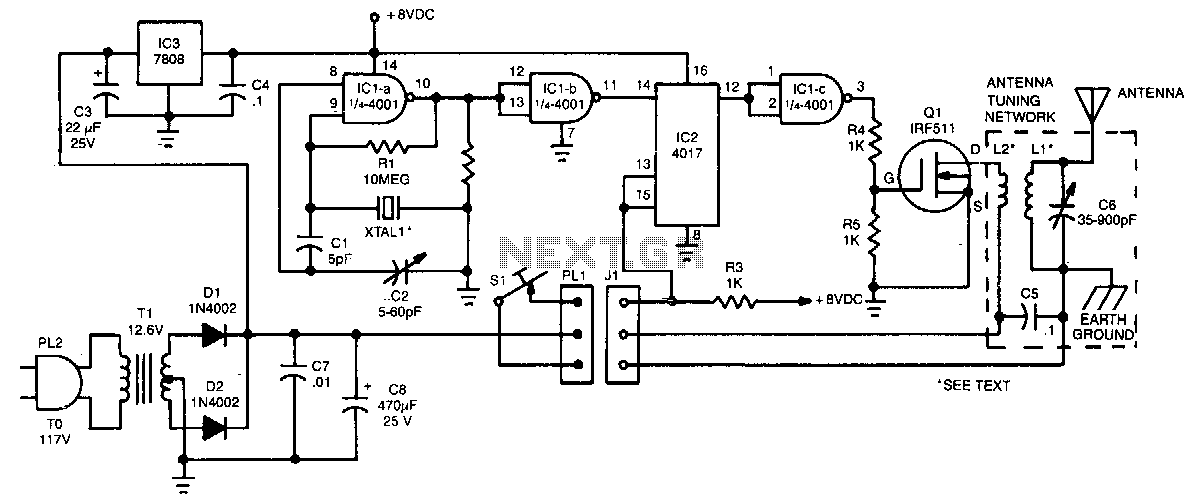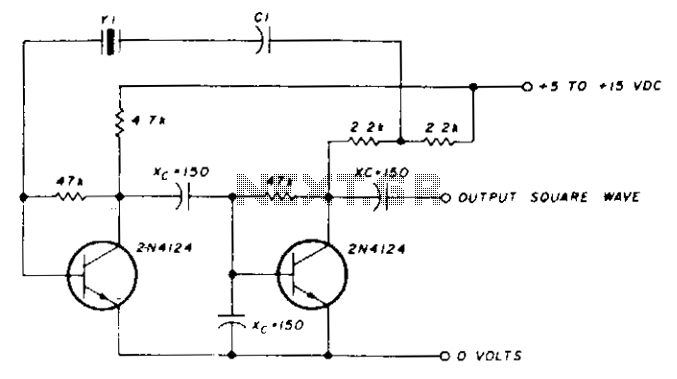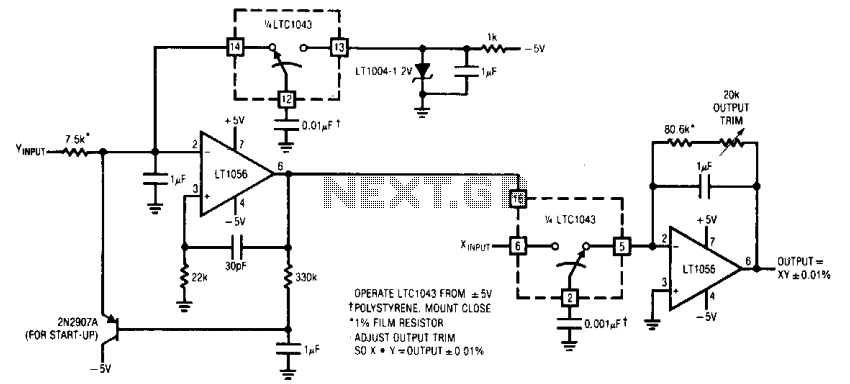
Low-Frequency Multiplier

This circuit utilizes a comparator configured as a Schmitt trigger (311H) along with two active bandpass filters (LM318H) to achieve a 3-kHz output. Higher odd harmonics can be generated by adjusting the active filters to the desired frequency, such as 1, 3, 5, 7, 9, etc. Even harmonics can be produced by replacing the Schmitt-trigger comparator with a full-wave rectifier or an absolute-value circuit.
The circuit design incorporates a Schmitt trigger, which serves to provide a stable output signal by introducing hysteresis, thus preventing noise from causing false triggering. The LM318H operational amplifiers are configured as active bandpass filters, which allow a specific range of frequencies to pass while attenuating others. By tuning the components of these filters, it is possible to select the center frequency and bandwidth, thereby enabling the generation of higher harmonics.
The output frequency of 3 kHz can be achieved by carefully selecting the resistor and capacitor values in the bandpass filter configuration. The odd harmonics (1, 3, 5, 7, 9, etc.) can be synthesized by adjusting the filter parameters. This tuning process involves changing the gain and phase response of the filters to resonate at the desired harmonic frequencies.
To produce even harmonics, the circuit can be modified by integrating a full-wave rectifier or an absolute-value circuit in place of the Schmitt trigger comparator. This modification allows the circuit to take advantage of the symmetry in waveform generation, thus enabling the production of even harmonics effectively.
Overall, this circuit design is versatile and can be applied in various signal processing applications, including audio synthesis, waveform generation, and frequency modulation. The careful selection of components and tuning techniques plays a critical role in achieving the desired output characteristics while maintaining signal integrity. This circuit uses a comparator as a Schmitt trigger (311H) and two active bandpass filters (LM318H). 3-kHz output is obtained. Higher harmonics (preferably odd) can be obtained by tuning the active filters to the desired frequency. can be 1, 3, 5, 7, 9, etc. Even harmonics can be produced by substituting a full-wave rectifier or absolute-value circuit for the Schmitt-trigger comparator.
🔗 External reference
The circuit design incorporates a Schmitt trigger, which serves to provide a stable output signal by introducing hysteresis, thus preventing noise from causing false triggering. The LM318H operational amplifiers are configured as active bandpass filters, which allow a specific range of frequencies to pass while attenuating others. By tuning the components of these filters, it is possible to select the center frequency and bandwidth, thereby enabling the generation of higher harmonics.
The output frequency of 3 kHz can be achieved by carefully selecting the resistor and capacitor values in the bandpass filter configuration. The odd harmonics (1, 3, 5, 7, 9, etc.) can be synthesized by adjusting the filter parameters. This tuning process involves changing the gain and phase response of the filters to resonate at the desired harmonic frequencies.
To produce even harmonics, the circuit can be modified by integrating a full-wave rectifier or an absolute-value circuit in place of the Schmitt trigger comparator. This modification allows the circuit to take advantage of the symmetry in waveform generation, thus enabling the production of even harmonics effectively.
Overall, this circuit design is versatile and can be applied in various signal processing applications, including audio synthesis, waveform generation, and frequency modulation. The careful selection of components and tuning techniques plays a critical role in achieving the desired output characteristics while maintaining signal integrity. This circuit uses a comparator as a Schmitt trigger (311H) and two active bandpass filters (LM318H). 3-kHz output is obtained. Higher harmonics (preferably odd) can be obtained by tuning the active filters to the desired frequency. can be 1, 3, 5, 7, 9, etc. Even harmonics can be produced by substituting a full-wave rectifier or absolute-value circuit for the Schmitt-trigger comparator.
🔗 External reference





